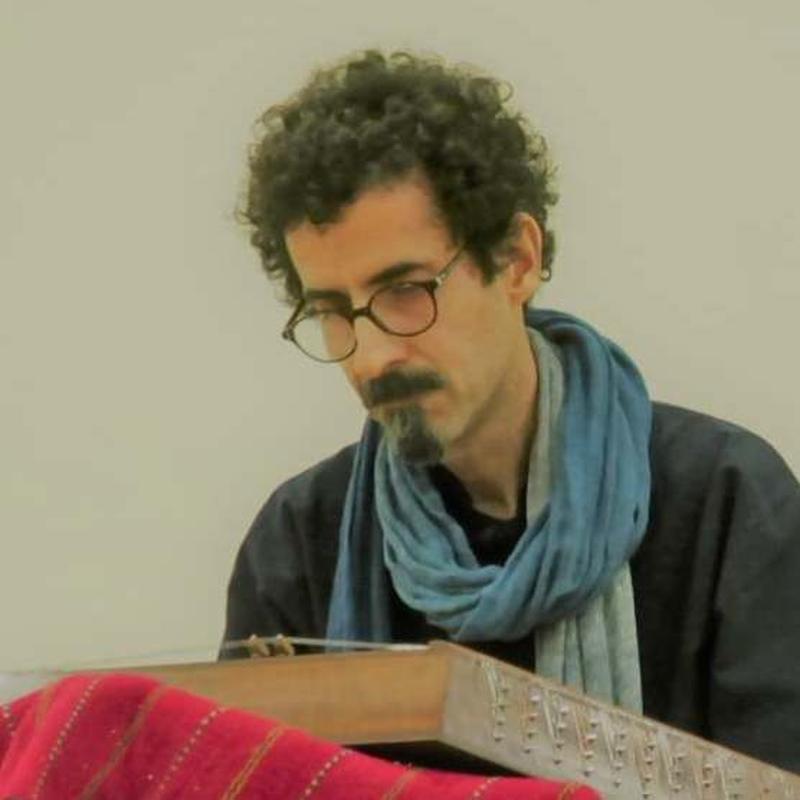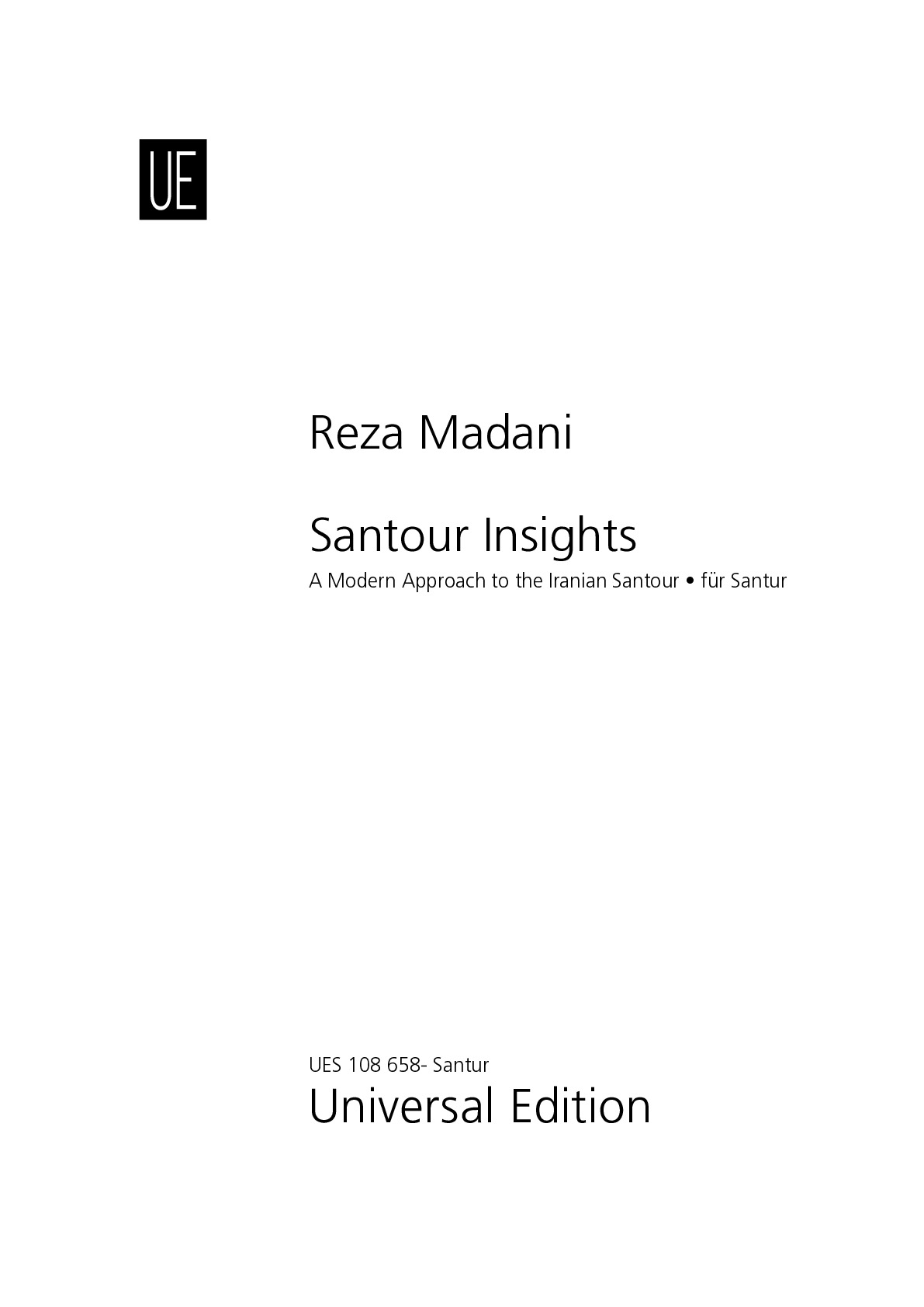

Reza Madani
Santour insights
Duration: 240'
Solos:
santur
Santour insights
Sample pages
Work introduction
This book presents an approach relevant to the Iranian santour but extendable to all percussion-string instruments (such as the cimbalom, hammered dulcimer, and similar Indian, Greek, and Asian variants), transforming them from simple diatonic instruments into fully chromatic ones. It then introduces techniques for multi-voice playing and harmonization.
It is recommended to purchase the digital version of the book, as it presents the diagrams used throughout in color.
What is necessary to perform this work?
Explanation of concepts and signs related to Iranian music.
Demiflat
A flat note with an arrow on its stem in the key signature or as an accidental indicates a demiflat (called koron in Persian), which lowers the natural note by one quarter tone. On an analog tuner, this corresponds to a pitch halfway between the natural note and its flat note. On a digital tuner, it is the natural note lowered by 50 cents. Some players tune between minus 40 and minus 60 cents, creating subtle variations in the overall feeling conveyed by the piece.
Hammer signs
In Persian, the hammers used to play the santour are called mezrabs. In the music score, hammer signs are indicated by a V for the left-hand mezrab and an n-like shape for the right-hand mezrab.
Tremolos and trills
In santour music, tremolos, called reez in Persian (literally meaning "small"), are very common. They are used both as ornamentation for short notes (indicated by double diagonals on the note's stem) and as a means to sustain long notes (indicated by triple diagonals on the note's stem). Tremolos are executed by rapidly alternating between the left and right mezrabs over the duration of the note, with the number of alternations left to the player's discretion. A special technique, if specified by the composer through the addition of the words Tak reez (or Tak or T for simplification) above or below the tremolo note, involves playing a distinct initial stroke before beginning the alternations, while respecting the note's duration. The Tak technique (meaning “single” in Persian) can also be used in the execution of a trill; in this case, the term Tak trill is indicated on the note.
Acciaccatura
A circle above or below a note indicates a Ta’kie, the Persian term for an acciaccatura. In Iranian music, this ornament is executed by playing a single grace note between the circled note and the note that immediately follows it. Unless otherwise indicated, the grace note should be a scale tone immediately higher than the higher of the two notes. For example, if C (circled) is followed by another C, it would be played as C-D-C, with D serving as the Ta’kie.
Modes in Iranian music
Shur and its derivatives (Tork, Abuata, Afshari, Dashti, Kord), Nava, Segah, Homayoun, (and its derivative Esfahan), Mahour, Raspandjgah, Chahargah.
Radif
Collection of pieces written in the above modes, serving as models for composition and improvisation in Iranian music.

